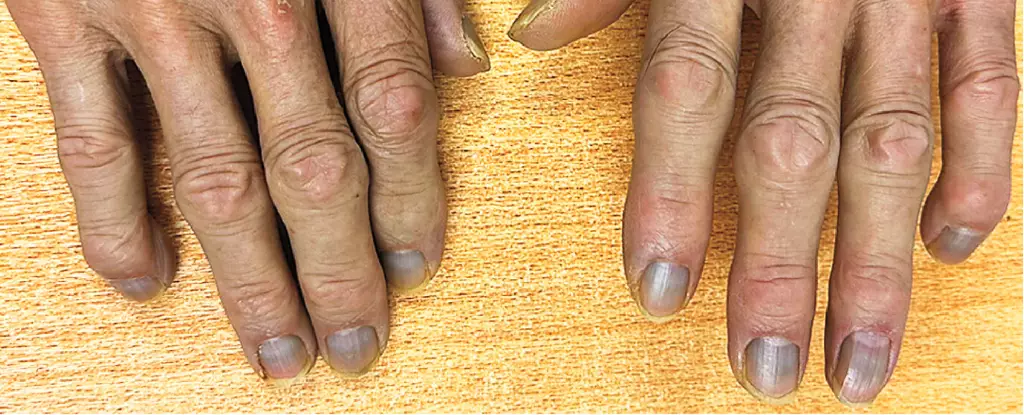An intriguing case recently emerged from a hospital in Hong Kong involving an 84-year-old male patient who presented with complications attributed to a urinary flow obstruction. While several urinary issues were expected, clinicians were taken aback by a seemingly unrelated finding: a noticeable grayish discoloration of his skin, eyes, and nails. The patient, who had reported this unusual pigmentation for about five years, delivered a perplexing conundrum for the medical team, prompting further investigation.
Upon thorough examination and blood analysis, the root of the issue was determined: an excessive accumulation of silver in the body. The tests revealed silver concentration levels that exceeded normal by more than 40 times, leading to the peculiar ashen coloration observed in his physical appearance. The phenomenon known as argyria is caused by the systemic deposition of silver in tissues, which occurs when silver particles embed themselves, often beneath the skin, leading to tiny oxidized granules visible on the surface.
Argyria is relatively uncommon but certainly not unheard of in medical literature. Historically, this condition primarily afflicted workers in industries involving silver, such as longstanding artisans or miners. They often experienced silver exposure through occupational hazards, prompting the gradual build-up of the metal in their bodies over time. However, in contemporary settings, a significant number of cases correlate with the use of silver-containing medications, particularly those marketed for their antimicrobial properties.
One such medical product that has garnered attention is colloidal silver. Despite persistent promotion as a natural remedy for various ailments, extensive scientific scrutiny has yielded no evidence validating its effectiveness. In fact, regulatory bodies like the United States Food and Drug Administration (FDA) overtly caution against its use, deeming colloidal silver neither a safe nor effective treatment for any medical condition. Yet, the market continues to flood with supplements boasting silver’s beneficial properties, often misleading consumers into adopting potentially harmful practices.
Silver can infiltrate the body through multiple exposure routes, including inhalation, dermal absorption, and ingestion. As a charged particle, silver ions have the unique ability to disperse within the body, depositing themselves in various tissues. When exposed to ultraviolet radiation, these particles can undergo a transformation, further playing a role in the observable change in skin pigmentation, where they reflect light to impart a gray or bluish hue.
This specific case raises questions about the origin of the patient’s silver exposure. A diligent investigation into his work routine as a waiter did not reveal any obvious sources of silver contamination. Moreover, there were no reported incidents of similar skin discoloration among his neighbors, which diminished the likelihood of environmental exposure. The enigma of how such a significant body burden of silver accumulated remains unanswered.
While the immediate concern centers around the striking cosmetic alterations, the implications of silver build-up on the patient’s overall health are generally minor. At lower concentrations, individuals may be asymptomatic, with the most pressing concern being potential interference with certain medications, including specific antibiotics and hormone replacements such as thyroxine.
Nonetheless, addressing the cosmetic aspect presents a challenge. Currently, no established medical interventions exist to remove silver deposits from the body. As a result, the patient is faced with a long-term aesthetic condition, and although it may not warrant acute medical intervention, ongoing monitoring will remain necessary. The patient’s medical team will likely enhance their surveillance of his silver status to better understand any future ramifications.
This case highlights the complexities inherent in medical diagnostics, particularly when faced with a rare condition such as argyria. As clinicians unravel the mystery of unusual symptoms and their origins, it underscores the importance of thorough investigations and the consideration of various exposure pathways. As for the patient, the experience serves as a poignant reminder of how essential it is to approach treatment methods backed by scientific evidence and caution against the allure of unverified remedies.


Leave a Reply